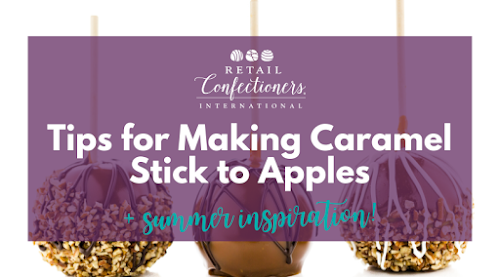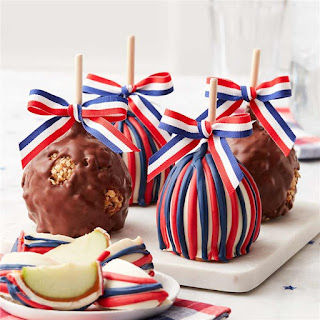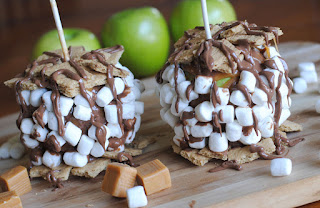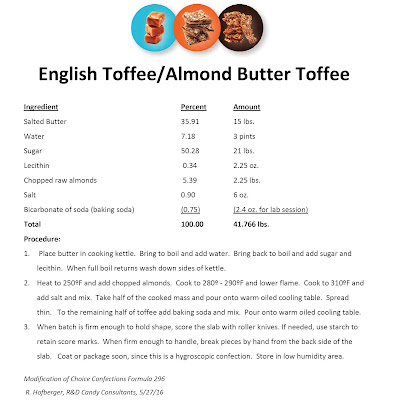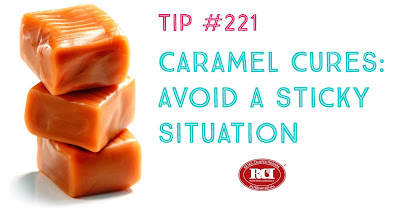|
|
Posted By RCI,
Tuesday, October 4, 2022
Updated: Tuesday, October 11, 2022
|

Consumers’ flavor preferences are divided between two trends. One based on comforting and nostalgic, more traditional flavors and the other on novelty, experimentation and intensity. These are not mutually exclusive; consumers will migrate between the two based on individual needs and external factors, shared Chiara Calcagnini and Eva Teyssier with Barry Callebaut in an article written for RCI’s Kettle Talk magazine. Experimental: Caramel with a Twist Consumers love to try out new flavor combinations. A caramel flavor with a twist can provide enough of a familiar ground to persuade them to take the plunge towards novelty flavors or ingredients. Twists also bring new life and interest to offerings that may otherwise be overlooked because they’ve been seen so many times before. Twists and pairings Caramel pairs wonderfully with a variety of different inclusions to create multi-sensorial experiences. Combinations with healthier inclusions like seeds, nuts and dried fruits are especially appealing for consumers. All sorts of caramel twists including combinations with cocktail-based flavors, rosemary and sea salt, cocoa nibs, etc. can bring your caramel creations to a next level and create an elevated and premium perception. Caramel also has incredible potential to satisfy various eating occasions and consumer needs. For example, caramel and caramel products are the perfect solution for the rising trend of on-the-go consumer snacking. In the spirit of exploring new and creative twists on caramel, we’re sharing 3 variations of caramel flavors to try this fall. Old Fashioned Cocktail Caramels If a caramel walked into a bar—a swanky, retro bar—it might walk out tasting like Shotwell Candy Co.’s “Old Fashioned” Cocktail Caramels. Described as “buttery soft caramel, infused with aromatic bitters, barrel-aged bourbon, and orange extract.” Salted Rosemary Caramel Sauce For herbaceous twist on your class caramel recipe, add a hint of fresh rosemary. This recipe for salted rosemary caramel sauce calls for boiled apple cider to add a more refined flavor and also recommends straining the caramel to remove any remaining pieces of rosemary. Sweet tip: Speaking of caramel sauce, if you have a great caramel recipe and aren’t currently making caramel sauce, this could be a natural variation which would give your customers another way to enjoy your caramel. Dark Chocolate Cocoa Nib Caramels Especially if you already have chocolate caramels in your wheelhouse, adding cocoa nibs is sure to elevate your recipe with welcome texture and crunch elements. Check out this recipe from Love & Olive Oil. Adding a twist to your caramel creations can elevate them from ordinary to interesting and even trendy, especially for younger consumers. If you’re interested in learning more about the science of crafting perfect caramels, click here to get notified when registration opens for RCI’s Caramels, Toffees & Brittles education course in Orlando, Florida February 21-23, 2023. Crave more?Click here to subscribe and start receiving weekly tips, like this, delivered straight to your email inbox. RCI's blog is just one of the many resources we offer to help candy makers refine their craft and build upon their business and marketing practices. Follow us on Facebook for even more sweet inspiration. Not a member? Click here to learn how RCI can help you build your sweet business.
Tags:
Caramel
Caramels
Cocktail
Cocoa Nibs
Creative Flavors
Recipe
Rosemary
Trends
Permalink
| Comments (0)
|
|
|
Posted By RCI,
Tuesday, June 30, 2020
Updated: Thursday, July 30, 2020
|
Have you ever experienced problems with caramel slipping off your caramel apples? The wax on your apple may be the culprit. By simply wiping each apple with a damp cloth prior to dipping, you can remove the waxy residue that rests on the apples. An apple naturally produces a waxy film to protect itself, however, in some instances additional food-grade wax is added by suppliers to further increase an apple’s shelf life. For this reason, it could save you time and effort to request unwaxed apples from your supplier, if they do add wax to their apples. If that doesn’t help, consider adding white compound to your caramel at a 5 to 1 ratio to help it better adhere to the apple. If you can’t wait to test this out, here’s a few summer-inspired caramel apples ideas to try too! Patriotic Caramel Apples
Show your patriotic stripes with drizzles of red and blue over a white chocolate coated caramel apple. 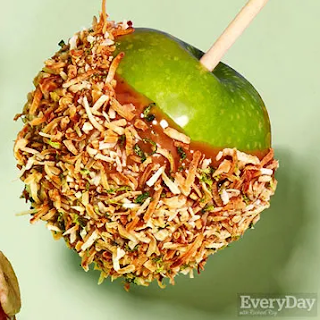
Zesty Coconut Caramel Apples
Think tropical by adding a generous helping of toasted coconut and a little lime zest to your caramel apples. 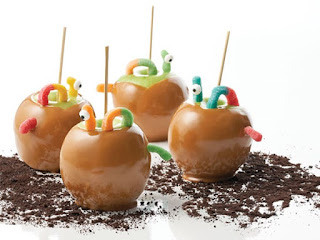
Wormy Caramel Apple
Turn shoppers heads with these fun, wormy caramel apples! S’mores Caramel Apples
Transform your caramel apples into a s’mores lover’s dream by adding layers of graham crackers, marshmallows and drizzled chocolate. Was this tip helpful? If so, let us know in the comments below. Crave more? If you like what you read here, look for the "Subscribe now" box on the right to enter your email address and start receiving weekly tips, like this, delivered straight to your email inbox. RCI's Tip of the Week blog is just one of the many resources we offer to help candy makers refine their craft and build upon their business and marketing practices. Not a member? Click here to learn how RCI can help you build your sweet business.
Tags:
4th of July
Apple
Candy Hacks
Caramel
Caramel Apple
Caramel Apples
Caramels
Coconut
Idea Sharing
Inspiration
Problem Candy
S'mores
Something on a Stick Day
Summer
Permalink
| Comments (0)
|
|
|
Posted By RCI,
Tuesday, June 12, 2018
Updated: Monday, April 27, 2020
|
With National Almond Buttercrunch Day at the end of the month, now is the time to make plans to perfect your recipe or introduce this popular confection into your product line. Keep reading for expert tips on how to achieve the signature crunch as well as a formulation worthy of a national holiday.
ALL ABOUT THAT CRUNCH
According to Walter Richmond, author of Choice Confections, this buttery and crunchy treat is “one of the finest confections made.” So how do you get the perfect crunch? This confection’s signature crunch comes from a high cook temperature and the right formulation of ingredients, namely butter and sugar. Typically made by caramelizing sugar with butterfat at a high temperature of 290-300° F. Equally important, the ratio of butter and sugar will have an effect of the grain of the crunch. Richmond recommends 37-42 percent butter and 63-58 percent sugar (nuts excluded) for the confection to gradually become softer and melt in your mouth when eating.
Use the following formulation to adapt this classic recipe in your own candy kitchen.
Maybe it’s the crunch or rich buttery goodness, consumers love buttercrunch enough to honor it with a national holiday. If you’re looking to gain a better understanding of how to make great buttercrunch (or toffee) with consistency or how to make corrections when issues arise, make plans to attends RCI’s upcoming Caramels, Toffees & Brittles course August 15-17, 2018 in Baltimore, Maryland. Caramels, Toffees & Brittles offers students optimal hands-on learning experience while benefiting from the knowledge and skills presented by confectionery and chocolate experts.
Caramels, Toffees & Brittles is open to both RCI members and non-members. Event organizers encourage those interested to register now, as the course is limited to the first 24 registrants. For detailed course information, visit www.retailconfectioners.org/caramels.
Tags:
2018
Almond Buttercrunch
Brittles
Candy Making
Caramels
June 5
Recipe
Toffees Tuesday
Permalink
| Comments (0)
|
|
|
Posted By RCI,
Tuesday, February 14, 2017
Updated: Wednesday, April 29, 2020
|
Known for its characteristically smooth and chewy texture, caramel is one of the most popular and beloved candies. However, even caramel’s biggest fans are not willing to risk dental work for sticky caramel. If creating an unhappy customer isn’t enough, caramel that is too sticky can also lead to difficulties during the manufacturing process, thus creating a very sticky situation.
Below we’ve identified the top seven common causes for sticky caramels and possible solutions, presented at RCI's Caramels, Toffees & Brittles course.
- Not enough fat – Increase the percentage of fat and/or the amount of milk being used in the recipe. A minimum of 8% fat is recommended when making caramels.
- Excessive inversion – Inversion occurs when sucrose (a disaccharide) is broken down into glucose and fructose. This can be caused by extended cooking times (especially under acidic conditions) and the use of the enzyme invertase. Increasing reducing sugars will add to the flavor and color of caramel – but too much can cause excessive stickiness.
Check the pH of premix, water and other ingredients, including scrap, to identify excessive inversion as the problem. Caramel premix should have a neutral pH (6.8-7.0).
Two possible solutions for adjusting pH levels:
a) Add low-pH flavors at the end of cook sequence or use buffered flavors.
b) Increase premix pH with the addition of basic salts, such as sodium bicarbonate, sodium citrate (both considered natural and should be approximately 0.1% of batch)
- Not enough milk – A minimum of 3.7% milk protein solids or higher is recommended
- Low cooking temperature – Increasing the final cooking temperature slightly will produce caramel with a harder texture. Even one or two degrees can make a significant difference. Additionally, do not allow the moisture from the cooking process to drain back into the kettle.
- Too much corn syrup – Too much corn syrup can create a tender caramel, but also lead to stickiness and lack of body. Adjust the ratio of sugar to corn syrup (reduce the corn syrup or dextrose equivalent of corn syrup)
- Too much humidity – An overly humid environment can make caramel sticky and create a less than desirable layer of scum on its surface. Too avoid exposure to excessive humidity, pack and store cooked caramel away from steam kettles and in an area with a relative humidity of 40-50%.
- Lack of emulsifiers – The addition of mono and diglycerides (generally 1-1.25%) will produce caramel that is less sticky.
Great caramel doesn’t happen by accident. With all the factors that play into the science of making caramel, even one or two degrees, for example, can mean the difference between coveted caramels and a sticky mess.
Make your customers stick, but not your caramels! Registration for RCI’s Caramels, Toffees & Brittles course opens tomorrow, February 15. This three-day intensive course is designed to help candy makers (RCI members and non-members) understand the science behind recipe formulations and learn troubleshooting techniques for caramels, toffees and brittles. Participants will gain hands-on experience in the kitchen making variations of these coveted confections for several different applications.
Visit retailconfectioners.org/caramels for more information and to register for the course, starting February 15. Note: This course is limited to the first 24 registrants and is expected to sell out quickly.
Tags:
Candy Making
Caramel
Caramels
Education
Problem Candy
Quality Control
Sticky Caramel
troubleshooting
Permalink
| Comments (0)
|
|
|
Posted By RCI,
Tuesday, November 8, 2016
Updated: Wednesday, April 29, 2020
|
Add a little holiday “cheers” to your confections this season. Perfect for holiday parties and gifts, we’ve curated three ideas from RCI members that incorporate beer, wine and spirits into their confections.
Beer Brittle
Joy Lyn’s Candies of Paradise, California partners with a local brewery to create a peanut brittle made with Sierra Nevada’s Pale Ale. Coined as “Beer Brittle,” this popular confection is made in small batches and offers a subtle hint of hops and malt. Given the popularity of the product, Sierra Nevada has allowed Joy Lyn’s to display their logo prominently on the front of the brittle packaging. Joy Lyn’s continues to expand their line of Sierra Nevada flavored products, including a jalapeno beer brittle and a Hop Salt Sout Caramel, as its name suggests, the caramels are sprinkled with salt infused with hops.
Irish Whiskey Truffle Shots
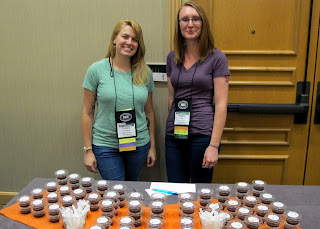 |
KakaoChocolatepresented their Irish whiskey truffle shots
toRCI members during Candy Clinic at the 2016
Annual Convention in Indianapolis.
|
Kakao Chocolate of St. Louis, Missouri has developed an indulgent Irish Whiskey Truffle Shot, by piping Irish whiskey ganache into recyclable sample cups and topped with cocoa nibs. When making the ganache, they add the whiskey at the end so the alcohol doesn’t cook out. If your store hosts a holiday open house, this would be a fun and unexpected treat for adult guests.
 |
Elevated Candy Co.sharedtheir black currant brandy-infused truffles
withRCI members during Candy Clinic at the 2016
Fall Conference in Vancouver, BC. |
Black Currant Brandy-Infused Truffles
Elevated Candy Co. of Port Townsend, Washington took the popular pairing of wine and chocolate to create the Black Currant Truffle. This popular confection is made by incorporating a local black currant-infused brandywine into their ganache and finishing the piece with a dash of red Hawaiian alea sea salt.
If you decide to incorporate beer, wine or spirits into your confections, know that regulations vary from state to state. Check with your local liquor control commission and familiarize yourself with regulations put in place by your state, as many prohibit the sale of confections that contain alcohol.
Tags:
Beer
Candy Making
Caramels
Chocolate
Christmas
Creative Flavors
Flavors
gifts
Idea Sharing
Liquor
Marshmallow
Peanut Brittle
Recipe
Thanksgiving
Truffles
Wine
Permalink
| Comments (0)
|
|
|
Posted By RCI,
Tuesday, March 29, 2016
Updated: Wednesday, April 29, 2020
|
Suffer from sweaty sea salt caramels? Take tips from fellow candy makers and RCI members on how to avoid this common problem, as discussed through RCI’s member forum, List Serve.
“We are looking for a high-quality sea salt for our caramels. We experience problems when storing salted caramels in our cool room (50 degrees – 50% humidity). The sea salt seems to sweat or become clear on the caramel when stored.” - M. Mootz, Michael Mootz Candies, Inc.
“We do not store our sea salt caramels at a reduced temperature due to similar issues, we store [sea salt caramels] at factory room temperature.” – T. Hicklin, Candy House Gourmet
“Some salts are harder than others. Pink Himalayan sea salt is harder and more dense. It is less likely to absorb moisture.” – R. Hofberger, (retired)
“I would recommend dehumidifying to at least 40%. If that can’t be done, shrink wrap the boxes/cases. Completely enclose the product and then store. It works very well.” – Marty Lyp, Peterbrooke Chocolatier
Stay connected with RCI through Facebook for more tips and inspiration dedicated to the retail candy maker. Not a member?
Tags:
Candy Making
Caramel
Caramels
List Serve
Owning a Business
Problem Candy
Productivity
Quality Control
Permalink
| Comments (0)
|
|
|
Posted By RCI,
Tuesday, October 7, 2014
Updated: Wednesday, April 29, 2020
|
Sea salt caramels have become one of the most popular confections around. The sweet and salt combo is hard to beat. This month, in celebration of National Caramel Month, consider introducing a few new twists on caramels for your customers. We’ve scoured the internet to find you some unique flavor combos to consider:
Do you have a unique caramel flavor that your customers love? Share it in the comments below!
Tags:
Candy Holidays
Candy Making
Caramels
Creativity
Seasonal
Permalink
| Comments (0)
|
|





